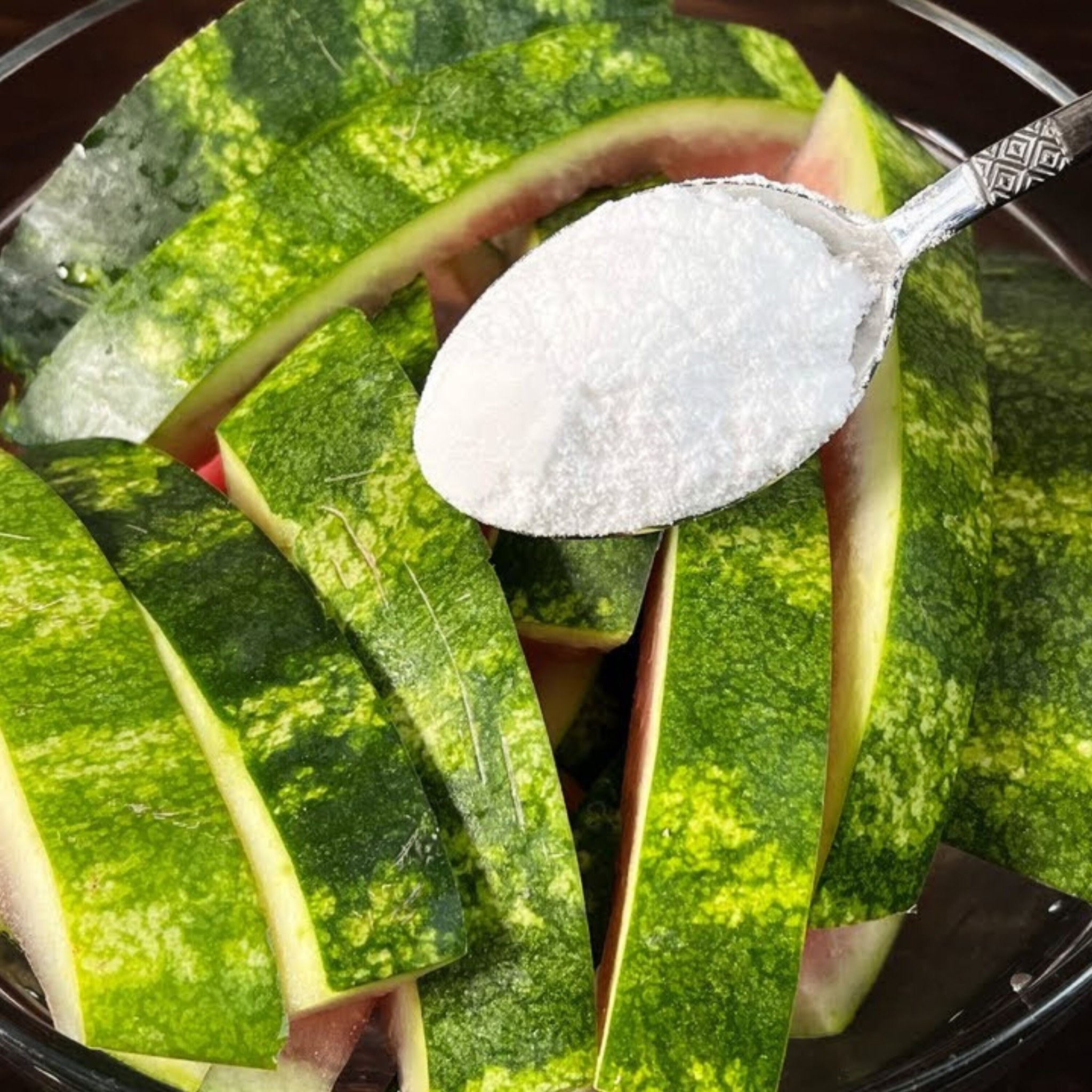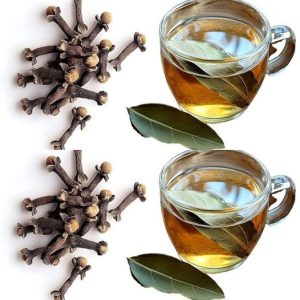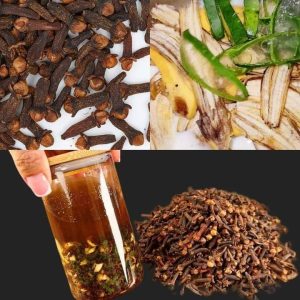
Watermelon rind is often overlooked as just a tough, inedible part of the fruit, but with a little creativity, it can be transformed into a delicious and unexpected treat. Adding baking soda to watermelon rind might sound unusual, but it’s a technique that can help soften the rind and enhance its flavor. Here’s how to make this unique and tasty dish:
Benefits of Watermelon Rind
Nutritional Value: Watermelon rind is rich in fiber and contains vitamins C and B6, potassium, and a small amount of magnesium.
Reduced Waste: Using the rind instead of discarding it helps minimize food waste.
Ingredients:
Watermelon rind (from a medium-sized watermelon)
1 teaspoon of baking soda
Water for boiling
Optional for flavor: vinegar, sugar, and a pinch of salt
Instructions:
Preparing the Watermelon Rind
1.Remove the Outer Skin: Use a vegetable peeler or a knife to carefully remove the tough green outer layer of the rind, leaving as much of the white part as possible.
2.Slice the Rind: Cut the rind into strips or cubes, depending on your preference.
Cooking the Rind with Baking Soda
1.Boil Water: Fill a pot with water enough to cover the rind pieces and bring it to a boil.
2.Add Baking Soda: Stir in the baking soda. The water will fizz slightly when you add the baking soda.
3.Add the Rind: Place the watermelon rind pieces into the boiling water.
4.Cook: Allow the rind to boil for about 5-10 minutes or until tender. The baking soda helps soften the rind and makes it more palatable.
5.Drain and Rinse: Once the rind is tender, drain the water and rinse the rind pieces under cold water to remove any taste of baking soda.
Flavoring (Optional)
1.Prepare a Pickling Solution: If desired, you can prepare a simple pickling solution with vinegar, sugar, and a pinch of salt.
2.Marinate the Rind: Place the cooked rind pieces into the pickling solution and let them marinate for a few hours or overnight in the refrigerator.
3.Serve Chilled: Enjoy the marinated watermelon rind as a refreshing side dish or a snack.
Tips:
Safety Note: Always be cautious when using baking soda in cooking. Use it sparingly as it can affect the flavor and texture of foods.
Creative Uses: You can use the prepared watermelon rind in salads, stir-fries, or even blend it into smoothies for added fiber.
This technique of adding baking soda to watermelon rind not only gives a new life to a usually discarded part of the fruit but also offers a unique culinary experience. Experiment with different flavorings to find the combination that best suits your taste!





